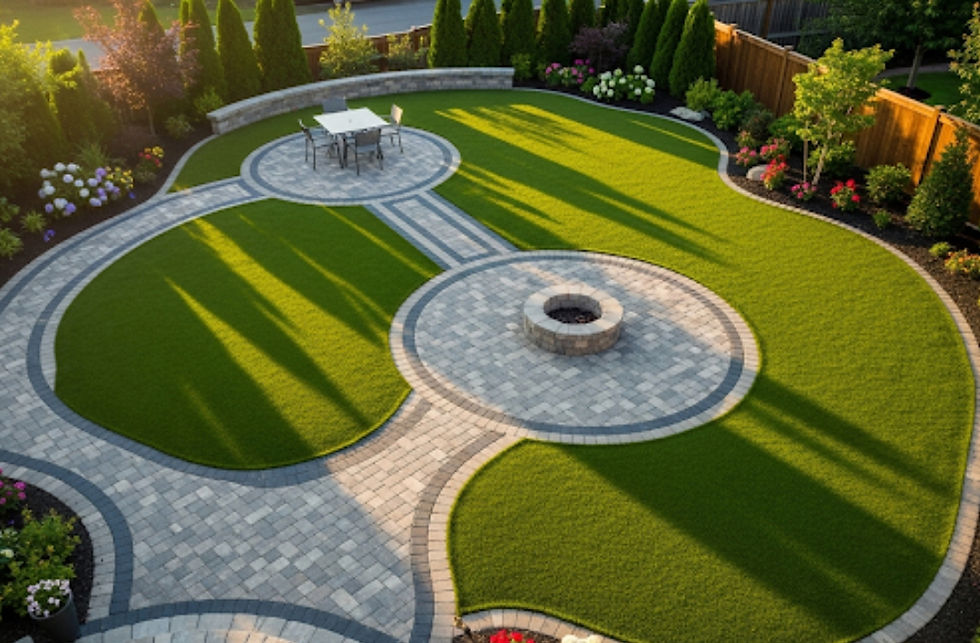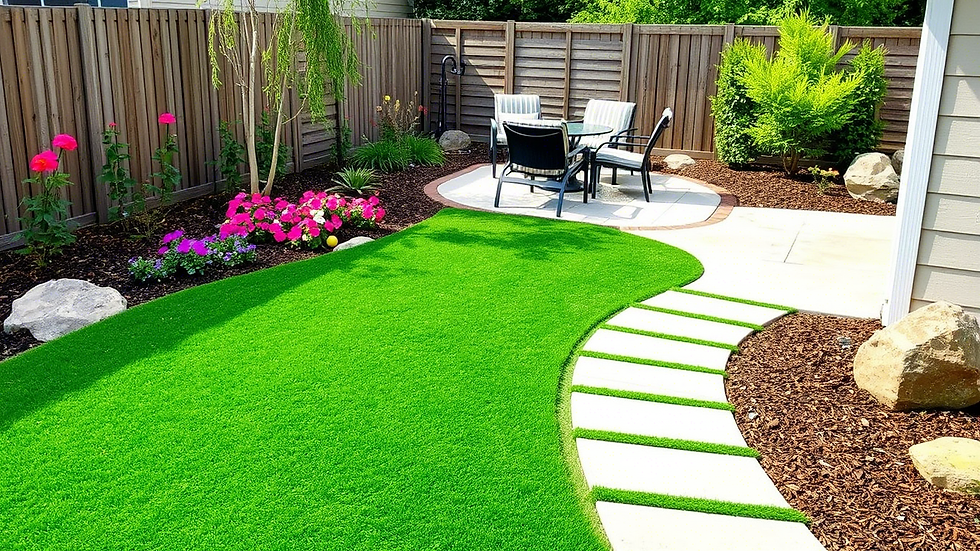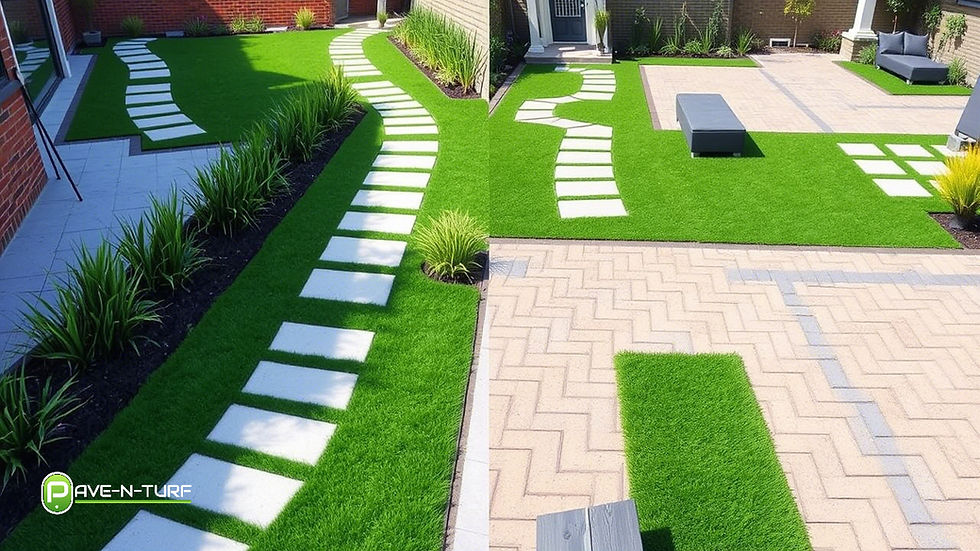Expert in Turf and Paver Installation
- paventurfusa
- 1 day ago
- 4 min read
Introduction
In making your backyard something beautiful yet useful, there is nothing like the blend of artificial turf and classy paving. A professional turf and paver installer can make an ordinary yard, patio, or sidewalk something wonderful that is aesthetically pleasing all year long. Whether you're looking to create a lush, green lawn with little ongoing maintenance or a sleek stone walkway to boost curb appeal, expert services are the difference-maker.
Here, we'll discuss why professional work is an investment worth making, what's involved in the process, and how this makeover can bring value to your business or home for years to come.

Why Use a Professional for Turf and Paver Installation?
While DIY projects can be tempting, turf and paver installation requires precision, the right tools, and experience to achieve a flawless finish. Professionals bring:
Expert Knowledge – They understand soil preparation, drainage, and proper base layering.
Time Efficiency – A project that could take weeks on your own can be done in a few days by a skilled crew.
Quality Results – No uneven pavers, wrinkled turf, or poor water flow.
Durability – Professional installation ensures your turf and pavers remain intact for years without shifting or sinking.
By hiring a trusted team, you’re not just paying for labor—you’re paying for peace of mind.
The Step-by-Step Process of Turf and Paver Installation
A high-quality turf and paver installation follows a meticulous process to guarantee both beauty and performance. Here’s how it typically unfolds:
1. Site Assessment and Planning
All successful projects begin with a complete analysis. Experts analyze the layout, drainage, sun exposure, and soil condition prior to suggesting turf and paver solutions that are appropriate for your area.
2. Ground Preparation and Excavation
The current surface—be it grass, concrete, or soil—is cleared away. The ground is graded and a base that will not settle or allow water to collect is put in place.
3. Layering of Paver Base
Sand and crushed stone are stacked to form a solid base for the pavers. This is done to prevent them from shifting or sinking in the future.
4. Installing the Pavers
Pavers are laid in the preferred pattern, followed by joint sand which holds them in place. Experts use special tools to ensure accuracy.
5. Turf Installation
For the turf section, a weed barrier is laid, then artificial grass rolls are cut and shaped to size. The turf is nailed or stapled down, and infill material is brushed in for appearance and texture.
6. Final Inspection and Clean-Up
The final step is a complete inspection to make sure everything is up to quality standards, then a cleaning of the work site.
Advantages of Turf and Paver Combination
The combination of turf and pavers provides more than a pretty face—it's an easy answer for many homeowners.
Low Maintenance
Artificial turf eliminates mowing, watering, and fertilizing, and pavers need only regular sweeping and sealing.
All-Weather Beauty
Rain or shine, turf remains green and pavers retain their shape. No dirty footprints, no patchy lawn.
Increased Property Value
Outdoor living areas with elegant turf and paver installation can attract homebuyers and increase resale value.
Versatility
From driveways and walkways to patios and pool decks, the combination works in various applications.
Design Ideas for Turf and Paver Spaces
If you’re considering this upgrade, here are a few creative ways to blend turf and pavers:
Checkerboard Patio – Alternate pavers and turf for a playful yet modern look.
Garden Pathways – Use turf borders around paver walkways for a softer aesthetic.
Pool Surrounds – Pavers offer slip resistance, and turf gives it a cool, comfortable feel.
Courtyards and Rooftops – Establish green oases in the city with little upkeep.
The options are almost limitless, and a professional installer will assist in bringing your concept to reality.
Selecting the Right Materials
Material selection can either make or destroy your project. Here's what to look for:
Paver Options – Concrete, brick, and natural stone all offer distinct textures and hues.
Turf Quality – Seek out UV-shielded, pet-safe, and long-lasting artificial grass for extended longevity.
Infill Selection – Rubber or silica sand infill can help increase turf performance and texture.
A specialist in turf and paver installation will help you navigate the selection process to find both style and long-term durability.
Cost Variables in Turf and Paver Installation
Turf and paver installation cost varies based on considerations such as:
Area Size – The larger the area, the more material and labor are needed.
Material Quality – High-quality pavers and turf of high grade cost more.
Site Preparation Needs – Rocky or uneven ground can entail additional work.
Design Complexity – Intricate designs and custom cuts are more labor-intensive and time-consuming.
Although the upfront cost will be greater than other types of landscaping, the money saved over the long term on maintenance usually makes up for it.
Maintenance Tips After Installation
After your turf and paver installation, a couple of easy maintenance tips can ensure it remains looking its best:
Regular Brushing – Sustains turf fibers in an upright position and avoids matting.
Rinsing – Hoses away dust, pollen, or pet waste.
Weed Control – Although there is less weed growth with turf, growth around edges should periodically be removed.
Paver Sealing – Seal every few years to shield against stains and wear.
Eco-Friendly Advantages
Selecting artificial turf and pavers can also be a green choice:
Water Conservation – Turf does away with recurring watering needs.
Less Chemical Usage – No fertilizers, pesticides, or weed killers required.
Durability – Long-lasting materials minimize waste due to replacements.
These advantages make turf and paver installation a great option for green-conscious homeowners.
FAQ Section
Q1: What is the time required for turf and paver installation?
A: Residential projects typically require between 3 to 7 days, depending on complexity and size.
Q2: Are turf and pavers able to be installed on top of an existing surface?
A: Sometimes, but experts usually suggest removing old surfaces for a solid foundation.
Q3: Is artificial turf pet and child-friendly?
A: Yes. Good-quality turf is non-toxic, gentle underfoot, and simple to clean.
Q4: Will pavers move over time?
A: With correct installation along with the right base preparation, pavers will stay stable for decades.



Comentarios